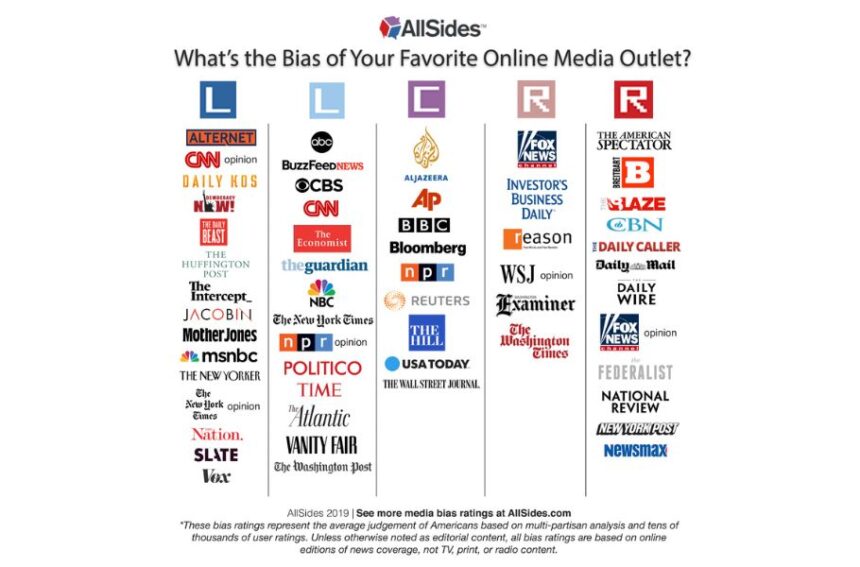Media bias is the tendency of news outlets to present information in a way that reflects a particular perspective or agenda. It can influence public opinion, shape political beliefs, and even impact major societal decisions. From selective reporting to sensationalized headlines, bias in the media is more common than many realize. With the rise of digital news and social media, distinguishing between factual reporting and biased content has become increasingly difficult. Understanding media bias is essential for making informed decisions and developing a well-rounded perspective on current events.
Types of Media Bias
Partisan Bias:One of the most common types of media bias is partisan bias, where news organizations lean toward a specific political ideology. Some networks are known for favoring conservative views, while others cater to liberal audiences. This results in news that is often skewed to fit an agenda rather than presenting facts objectively.
Sensationalism:Breaking News “Shocking Revelations!” Sound familiar? Sensationalism is a strategy used by media to grab attention through exaggerated headlines and emotionally charged language. While this increases viewership and engagement, it often distorts reality and misleads the public.
Advertising Bias:News outlets rely on advertisements for revenue, which can lead to a conflict of interest. If a major corporation funds a news station, the station may avoid negative coverage about the corporation to maintain financial support.
Confirmation Bias:People tend to seek out news sources that align with their pre-existing beliefs. This phenomenon, known as confirmation bias, creates echo chambers where individuals are only exposed to perspectives that reinforce their views, limiting critical thinking and open debate.
Omission Bias:Omission bias occurs when a media outlet selectively reports certain stories while ignoring others. By leaving out crucial information, they can shape narratives that influence public perception without outright lying.
Historical Context of Media Bias
Media bias has existed for centuries, shaping public opinion through selective storytelling. In the early days, newspapers were often funded by political parties, leading to openly partisan reporting. The rise of radio and television introduced broader access to news, but biases persisted as networks catered to specific audiences. With the internet and social media, bias has become even more pronounced, as algorithms personalize content to reinforce existing beliefs. Understanding this historical evolution helps us recognize how media bias continues to influence society today.
Media Bias in Politics
Large news organizations play a crucial role in shaping public opinion. Channels like CNN, Fox News, and MSNBC are known for their ideological leanings, influencing how political events are perceived.
Platforms like Facebook and Twitter personalize content based on user behavior, creating “filter bubbles” where individuals are only exposed to viewpoints that align with their own. This deepens political polarization and reduces exposure to diverse perspectives.
The rise of fake news has further complicated the issue of media bias. False information spreads rapidly online, making it difficult to distinguish between legitimate journalism and deceptive content.
How to Identify Media Bias
Identifying media bias requires critical thinking and careful analysis of news sources. Start by comparing multiple outlets to see how different perspectives shape the same story. Look for emotionally charged language, selective reporting, or the omission of key facts that could indicate bias. Fact-checking websites like Snopes, PolitiFact, and FactCheck.org can help verify claims and detect misinformation. By staying aware of these signs, you can develop a more balanced and informed understanding of current events.
The Consequences of Media Bias
Media bias can have serious consequences, shaping public perception and influencing opinions based on incomplete or skewed information. It contributes to political and social polarization, as people become entrenched in their own viewpoints without considering opposing perspectives. Misinformation spreads more easily, leading to confusion, distrust, and poor decision-making. Over time, media bias erodes public confidence in journalism, making it harder to distinguish facts from opinions. A biased media landscape ultimately weakens democracy by limiting open and informed discussions.
How Consumers Can Navigate Media Bias
Consumers can navigate media bias by developing critical thinking skills and questioning the credibility of news sources. Reading from multiple outlets with different perspectives helps create a more balanced understanding of events. Fact-checking information before accepting it as truth can prevent the spread of misinformation. Recognizing emotionally charged language and selective reporting allows individuals to spot potential bias. By staying informed and open-minded, consumers can make better judgments and avoid being misled by biased narratives.
The Role of Social Media in Media Bias
Social media platforms have amplified media bias by creating personalized content feeds that reinforce users’ existing beliefs. Algorithms prioritize engagement over accuracy, often pushing sensational or biased news to the forefront. This leads to the formation of echo chambers, where individuals are only exposed to viewpoints that align with their opinions. As a result, misinformation spreads rapidly, making it harder to discern fact from fiction. Being aware of these dynamics can help users critically evaluate the news they consume online.
The Importance of Media Literacy
Media literacy is essential for understanding how news is presented and recognizing potential bias. Learning to analyze sources, verify facts, and differentiate between opinion and objective reporting helps individuals make informed decisions. Schools and educational institutions can play a crucial role in teaching media literacy from an early age. Encouraging discussions on bias and misinformation fosters a more informed and engaged society. By improving media literacy, people can better navigate the complexities of modern news consumption.
Conclusion
Media bias is an unavoidable aspect of news consumption, but understanding it empowers individuals to make informed decisions. By recognizing bias, diversifying information sources, and applying critical thinking, we can navigate the media landscape more effectively.







buy verified google ads account https://buy-ads-accounts.click